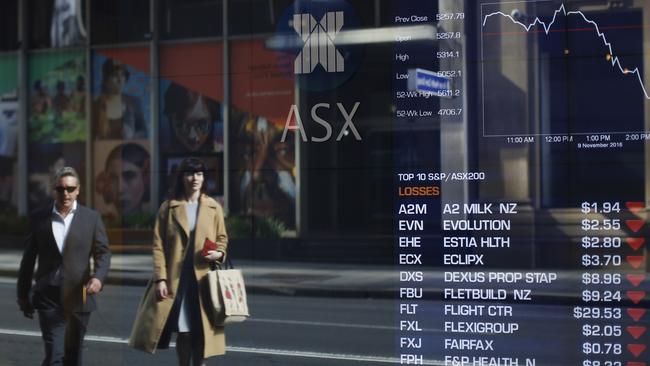Stocks dip as dollar rips past US81c
The ASX has ended the session in the red as the local dollar pushed past US81c for the first time since January 2015.

The local share market fell on Friday as caution lingered in the wake of North Korea’s latest nuclear test, while the Australian dollar surged past US81 cents for the first time in over two years.
At the close, the S&P/ASX200 index was 0.3 per cent, or 17.3 points lower on 5672.6, while the broader All Ordinaries index closed down 0.3 per cent, or 14.4 points to 5739.4.
Indices showed signs of rallying off key support levels throughout the week, however buyers were unconvinced ahead of what CMC chief markets analyst Ric Spooner described as a “horrible” weekend ahead.
“Many world markets are now parked around key levels as they wait on Hurricane Irma and the possibility of another North Korean missile test,” said Mr. Spooner.
Resources lost ground as underlying commodities traded mixed. BHP lost 0.2 per cent to $27.29, Rio Tinto fell 0.4 per cent to $68.50, Woodside Petroleum edged down 0.9 per cent to $28.87, while pure-play Fortescue lost 2.2 per cent to $5.85.
Financials were broadly lower, CBA closed down 1 per cent to $73.24, Westpac lost 0.7 per cent to $30.81, ANZ dropped 1 per cent to $28.85, while NAB shares finished 0.5 per cent in the red at $30.02.
“The big banks saw the sharpest downward moves of the day, driven by soft offshore leads and anxiety around the US debt ceiling chatter,” said Citi Global Markets’ Karen Jorritsma.
“The last time the US government did shutdown, the equity markets sold off hard and we’re seeing some of that caution here.”
Amcor shares fell nearly 2 per cent after speculation emerged the company is eyeing a takeover of a US rival, while Syrah Resource tapped fresh highs with gains over 4 per cent as the market took a fresh look at gold miners in the wake of a hike in Western Australia royalties.
In economics news, home loan approvals jumped 2.9 per cent in July with the Australian Bureau of Statistics showing a slowdown in investor loans over the period while owner-occupied lending rose.
Meanwhile, the Australian dollar hit a fresh two year high of US81.25 cents as it rose strongly against a weakened greenback, while Aussie dollar bulls were given a fresh tailwind from China’s August trade data.
ANZ senior China economist Betty Wang said the slowdown in export growth in August looks to be temporary, while imports are likely to be solid in the near future.
“A high base is one reason for the slowdown in August,” said Ms Wang, “admittedly, there are some uncertainties down the road which may affect China’s longer-term trade outlook, particularly the US’s investigation of China’s intellectual property practices.”
The local currency was 0.7 per cent, or US0.55 cents higher in late trade at US81.03 cents ahead of NAB’s survey on business confidence and conditions next week.
With AAP




To join the conversation, please log in. Don't have an account? Register
Join the conversation, you are commenting as Logout